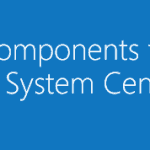A couple of weeks ago I passed Microsoft Exam 70-533 Implementing Microsoft Azure Infrastructure Solutions, which is focused on implementing and designing Microsoft Azure Infrastructure solutions such as Azure Websites or Azure Virtual Machines (IaaS). I think taking this exam and preparing for it was a great idea. Even if I have already done a couple of projects on Azure I still learned a lot during the preparation and you can find some of the best practices. Since Azure is a huge beast and the rapid deployment of new features, you will definitely find some new stuff you didn’t know before during the preparation for the exam. And of course taking new Microsoft Certifications early helps you to stand out in the IT Pro or Developer world. Of course passing exams alone does not make you an expert, but if you have know-how on a topic it’s is always got to have some kind of paper to prove it.
So what are the skills measured for this exam. The exam 70-533 focuses on 6 topics, Azure Websites, Virtual Machines, Cloud Services, Storage, Azure Active Directory and Virtual Networks. To my surprise I got a really good score on Azure Websites and of course Virtual Machines, since I used to run several of them on Azure. I also found out that Azure Active Directory is one of the parts I have to invest a little more.
Skills measured
Implement websites (15-20%)
- Deploy websites
- Define deployment slots; roll back deployments, configure and deploy packages, deploy web jobs, schedule web jobs
- Configure websites
- Configure app settings, connection strings, handlers, and virtual directories; configure certificates, custom domains, and traffic manager; configure SSL bindings and runtime configurations; manage websites by using Windows PowerShell and Xplat-CLI
- Configure diagnostics, monitoring, and analytics
- Retrieve diagnostics data; view streaming logs; configure endpoint monitoring, alerts, and diagnostics; monitor website resources
- Configure scale and resilience
- Configure auto-scale using built-in and custom schedules; configure by metric; change the size of an instance
- Manage hosting plans
- Create hosting plans; migrate websites between hosting plans; create a website within a hosting plan
Implement virtual machines (15-20%)
- Deploy workloads on Azure virtual machines (VMs)
- Identify supported Microsoft workloads; deploy and connect to a Linux VM; create VMs
- Implement images and disks
- Create specialized and generalized images for Windows and Linux; copy images between storage accounts and subscriptions; upload VHDs
- Perform configuration management
- Automate configuration management by using PowerShell Desired State Configuration and custom script extensions; enable puppet and chef extensions
- Configure VM networking
- Settings include reserved IP addresses, access control list (ACL), internal name resolution, DNS at the cloud service level, load balancing endpoints, HTTP and TCP health probes, public IPs, firewall rules, direct server return, and Keep Alive
- Configure VM resiliency
- Scale up and scale down VM sizes; auto-scale; configure availability sets
- Design and implement VM storage
- Configure disk caching; plan storage capacity; configure operating system disk redundancy; configure shared storage using Azure File service; configure geo-replication; encrypt disks
- Monitor VMs
- Configure endpoint monitoring, alerts, and diagnostics
Implement cloud services (15-20%)
- Configure cloud services and roles
- Configure instance count and size, operating system version and family, upgrade and fault domains, ACLs, reserved IPs, and network access rules; configure local storage; configure dedicated and co-located caching, local and cloud configurations, and local disks; configure multiple websites; configure custom domains
- Deploy and manage cloud services
- Upgrade a deployment; VIP swap a deployment; package a deployment; modify configuration files; perform in-place updates; perform runtime configuration changes using the portal; scale a cloud service; create service bus namespaces and choose a tier; apply scalability targets
- Monitor cloud services
- Monitor service bus queues, topics, relays, and notification hubs; configure diagnostics
Implement storage (15-20%)
- Implement blobs and Azure files
- Read data; change data; set metadata on a container; use encryption (SSL); perform an async blob copy; configure a Content Delivery Network (CDN); implement storage for backup and disaster recovery; configure Azure Backup; define blob hierarchies; configure custom domains; configure the Import and Export Service
- Manage access
- Create and manage shared access signatures; use stored access policies; regenerate keys
- Configure diagnostics, monitoring, and analytics
- Configure retention policies and logging levels; analyze logs
- Implement SQL databases
- Choose the appropriate database tier and performance level; configure point in time recovery and geo-replication; import and export data and schema; design a scaling strategy
- Implement recovery services
- Create a backup vault; deploy a backup agent; back up and restore data
Implement an Azure Active Directory (15-20%)
- Integrate an Azure AD with existing directories
- Implement DirSync, O365 integration, and single sign-on with on-premises Windows Server 2012 R2; add custom domains; monitor Azure AD
- Configure the Application Access Panel
- Configure single sign-on with SaaS applications using federation and password based; add users and groups to applications; revoke access to SaaS applications; configure access; federation with Facebook and Google ID
- Integrate an app with Azure AD
- Web apps (WS-federation); desktop apps (OAuth); graph API
Implement virtual networks (15-20%)
- Configure a virtual network
- Deploy a VM into a virtual network; deploy a cloud service into a virtual network; configure static IPs; configure internal load balancing; design subnets
- Modify a network configuration
- Modify a subnet; import and export a network configuration
- Design and implement a multi-site or hybrid network
- Choose the appropriate solution between ExpressRoute, site-to-site, and point-to-site; choose the appropriate gateway; identify supported devices and software VPN solutions; identify networking prerequisites; configure regional virtual networks and multi-site virtual networks
Preparation
To prepare for the exam I used several different resources such as Microsoft Virtual Academy, TechNet, Channel9 and of course Microsoft Azure it self. I also found some great community blogs which have some link summaries:
- Microsoft Azure
- Channel9 (Azure Day)
- vNiklas Virtualization blog – Passed the 70-533 Azure Infrastructure exam
- Sandbu – Blogg – Implementing Microsoft Azure Infrastructure Solutions exam 70-533
- AzureMan.com – Azure infrastructure exam (70-533) study guide
If you are going to take this exam I wish you good luck.
Update: Microsoft retired some of the Azure exams and replace them by new ones. One of the is the AZ-100 series, which will give you the Microsoft Certified: Azure Administrator, and is addressing the 70-533.
Tags: 70-533, Azure, Azure Active Directory, Azure Site Recovery, Certification, Channel9, Cloud, Cloud Services, Exam, Hybrid Cloud, Hyper-V, IaaS, Microsoft, Microsoft Azure, Microsoft Certification, Microsoft Cloud, Microsoft Learning, Networking, SQL, Storage, TechNet, Virtual machines, Websites Last modified: January 13, 2019












What title do you receive after passing only this exam (Microsoft Exam 70-533)? I am from the linux side, but interested in Azure
You will be MCP or Microsoft Specialist if you do a Linux exam together with 70-533 you can become a MCSA: Linux on Azure https://www.microsoft.com/en-us/learning/mcsa-linux-azure-certification.aspx
Hi , I have 8.5 yr core development experience in C/C++ ,Unix but highly interested in Azure .Please suggest me should I move to Azure while having no exp. in C# and networking.If yes then from which certification I should start ?
Does this exam need PowerShell script input? I am not the programmer background of PowerShell.
this book Ref 70-533 mentioned PowerShall stuff lot so I am wondering now.
Thanks,